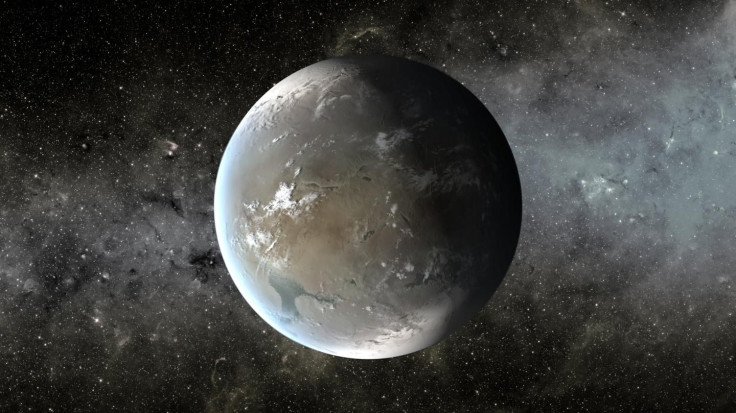Kepler-62f, An Exoplanet 1,200 Light-Years From Earth, May Sustain Life As We Know It

In 2013, scientists using NASA’s Kepler space telescope discovered a system of five planets locked in an orbit around a star smaller and cooler than our Sun nearly 1,200 light-years from Earth. A team of astronomers has now posited, based on several computer simulations encompassing many possible scenarios, that at least one of the planets in the system — Kepler-62f — may be capable of sustaining life as we know it.
“We found there are multiple atmospheric compositions that allow it to be warm enough to have surface liquid water,” said Aomawa Shields, a postodoctoral fellow at the University of California, Los Angeles and the lead author of a study published in the journal Astrobiology, said in a statement. “This makes it a strong candidate for a habitable planet.”
Kepler-62f is approximately 40 percent larger than Earth and thus lies in the range of planets that are likely to be rocky and have oceans. However, since the planet is located much farther away from its parent star than Earth is from the sun, its atmosphere would need to have a much higher amount of carbon dioxide — a potent greenhouse gas — for the surface to be warm enough to maintain liquid water.
In order to examine the possibility of the planet having a life-sustaining atmosphere and surface, the researchers used existing global climate models to run several simulations to include a wide variety of variables. They ran simulations on the planet having an atmosphere that is either as thick, or even thicker, than Earth’s, and on it having various concentrations of carbon dioxide in its atmosphere — ranging between Earth levels and 2,500 times that amount. They also incorporated different configurations of the planet’s orbital paths into their simulations.
Based on these models, the researchers posited that Kepler-62f could be habitable through the year if it had an atmosphere that is three to five times thicker than Earth’s and that is composed almost entirely of carbon dioxide. If, on the other hand, it does not have a thick layer of carbon dioxide enveloping it and has the same amount of the gas as Earth does, it may still temporarily sustain life — provided its orbital path puts it in the habitable zone for a part of the year.
For the purpose of the study, the researchers calculated the planet’s orbit using an existing computer model called HNBody.
“If it doesn’t have a mechanism to generate lots of carbon dioxide in its atmosphere to keep temperatures warm, and all it had was an Earth-like amount of carbon dioxide, certain orbital configurations could allow Kepler-62f’s surface temperatures to temporarily get above freezing during a portion of its year,” Shields said.
So far, scientists have detected over 2,300 exoplanets — planets orbiting stars other than our sun — using the Kepler space telescope. Of these, 21 are about the same size as Earth and are locked in the so-called “Goldilocks zone” around their parent star, making them prime candidates for life as we know it to exist.
“Before the Kepler space telescope launched, we did not know whether exoplanets were rare or common in the galaxy. Thanks to Kepler and the research community, we now know there could be more planets than stars,” Paul Hertz, Astrophysics Division director at NASA, recently said. "This knowledge informs the future missions that are needed to take us ever-closer to finding out whether we are alone in the universe."
© Copyright IBTimes 2024. All rights reserved.












